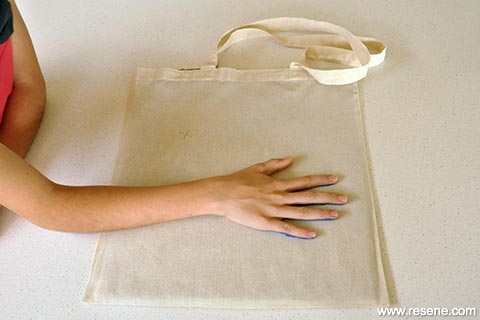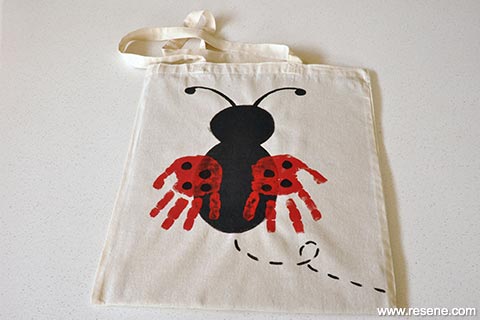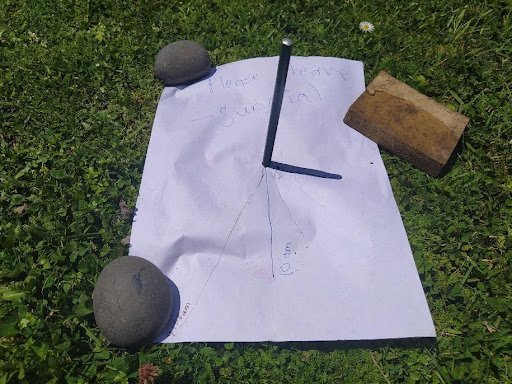Aug 24: Paint your own cloth bags
Read about birds, make some bird paintings with your hands!

Below are some talking points and activities to pass the time, all relating to today’s story.
Talking points
Discuss the ideas presented in the story with your family—at home or over video conferencing. Find ways to involve as many people as possible, especially those who you know are isolated by the lock-down.
- What seabirds do you most commonly see in your day-to-day life? How many different sea birds are you aware of? Do you agree that most New Zealanders are not aware of how many seabirds breed here – 14 types of albatross and over 70 types of seabird?
- The Bounty Islands are described as “granite stacks devoid of vegetation, their entire surface peppered with tens of thousands of seabirds.” Looking at the picture of one of these stacks, do you think you can imagine visiting the Bounty Islands? What might you smell and hear? How do you think the birds survive without vegetation?
- What do you learn about seabird activity from the world map that looks like it is covered in scribbles? What was your reaction to seeing this information?
- At the end of summer, seabirds head to regions of the Pacific where water masses meet. They are drawn to the “hyper-fertile” waters here that are rich in phytoplankton. What do you think hyper-fertile means? Why might the birds and other creatures be feeding intensely at this time of year?
- Tawaki (a penguin species) travel up to 1,000km per week. That’s roughly the driving distance between Cape Reinga and Wellington. The article uses the words “extraordinary” and “insane” to describe these journeys. What are your thoughts? What do you think might drive this intense activity, since scientists are not sure of the reason for it?
Language Focus
“As we gingerly move through the menagerie, the big birds shuffle nervously on their nests, briefly revealing ivory-coloured eggs beneath their downy breasts. Occasionally, they stand up to stretch, unfurling the full 2.5-metre span of their wings. The sky above is thick with albatrosses, which loop in with sublime grace only to land with all the delicacy of a bag of golf clubs.”
- Why do the writer and his companion move “gingerly”?
- Which phrases show you that the birds are uncomfortable with the visitors?
- Why do you think the writer includes the measurement of the albatrosses’ wingspan?
- What is implied by the description “the sky above is thick with albatrosses?”
- The albatrosses land “with all the delicacy of a bag of golf clubs.” What does this show about them?
Answers: 1. They are trying to be very careful. 2. “the big birds shuffle nervously.” 3. The measurement helps us to visualise their huge size and feel impressed. 4. There are a lot of albatrosses in the air. 5. They are clumsy when they land.
Activity: Cloth Bags
Brighten up some boring bags with this “handprint” art

You will need:
- Plain calico cloth bags x 2
- Stiff cardboard
- Paint in your choice of colours
- Medium and small craft paintbrushes
- Willing hand participants
First, iron your bag and then cut a piece of cardboard big enough to fit inside the bag. This keeps the bag taught and flat and stops any paint from bleeding through to the other side.
How to paint a bird bag
Step 1: Use a pencil to mark where you want the handprints to go. Use a medium-sized craft paintbrush to paint on to the hand.

Top tip: apply two layers of paint. The first layer of paint dries quickly due to the heat of the hand. Be liberal with the second layer of paint – this layer won’t dry so quickly as the first coat acts as an insulating layer.
Step 2: Carefully put the hand in position and press down firmly, making sure to apply equal pressure to the whole hand and each finger so that a good handprint is made. Remove the hand by peeling it off in a rolling motion.

Step 3: Use a small craft paintbrush to fill in any areas, such as the hole made with the palm of the hand. Add eyes, beak and branches. Allow the bag to dry before using.

How to paint a ladybird bag
Step 1: Use a pencil to sketch out your bug shape and then use a medium-sized craft paintbrush to paint in the outline using your chosen colour. Use the same paintbrush to fill in the whole area.

Step 2: As with the first bag, paint on two layers of paint onto the hand and press it down firmly.

Step 3: Use a small craft paintbrush to paint on the antennae, wing spots and flight path. Allow the bag to dry before using.

Top tip: For a little extra bling use metallic paint for some of the extra details. You can also use footprints for extra variety.

















